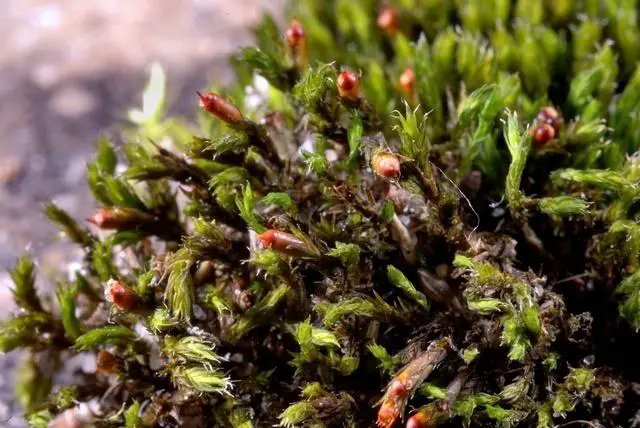
large.jpg from: https://www.inaturalist.org/guide_taxa/225523
Introduction
In the vast and captivating world of bryophytes, one particular moss species stands out for its resilience and adaptability – the Schistidium sordidum I.Hagen. Belonging to the Grimmiaceae family, this unassuming yet remarkable moss is commonly referred to as Schistidium. Despite its diminutive stature, this bryophyte plays a crucial role in various ecosystems, making it a subject of fascination for enthusiasts and researchers alike.
Background
Before delving into the intricacies of Schistidium sordidum I.Hagen, it’s essential to understand the broader context of bryophytes. These non-vascular plants, which include mosses, liverworts, and hornworts, are among the oldest land plants on Earth. They have evolved remarkable strategies for survival, thriving in diverse environments and contributing significantly to the intricate web of life.
Main Content
Morphology and Identification
Schistidium sordidum I.Hagen is a small, acrocarpous moss that forms dense, cushion-like tufts or mats. Its leaves are lanceolate to ovate-lanceolate, with a distinctive costa (midrib) that extends beyond the leaf apex, forming a short hair point. The capsules are immersed or emergent, with a conical operculum (lid) and a peristome (fringe of teeth) that aids in spore dispersal.
Global Distribution and Habitat
This resilient moss species has a cosmopolitan distribution, thriving in various habitats across the globe. It can be found growing on rocks, walls, tree bark, and even in urban environments, showcasing its remarkable adaptability. Schistidium sordidum I.Hagen is particularly well-suited to dry and exposed habitats, thanks to its ability to tolerate desiccation and extreme temperatures.
Ecological Roles and Adaptations
Despite its unassuming appearance, Schistidium sordidum I.Hagen plays a vital role in its ecosystems. As a pioneer species, it contributes to the formation of soil and the colonization of bare surfaces, paving the way for other plants to establish themselves. Additionally, these mosses serve as microhabitats for various invertebrates and provide nesting materials for birds and small mammals.
One of the remarkable adaptations of Schistidium sordidum I.Hagen is its ability to desiccate and revive upon rehydration, a process known as poikilohydry. This trait allows the moss to survive in harsh, dry environments and quickly resume its metabolic activities when water becomes available.
Case Studies/Examples
In urban environments, Schistidium sordidum I.Hagen has been observed growing on concrete surfaces, demonstrating its resilience and ability to thrive in human-modified habitats. This moss has also been studied for its potential use in biomonitoring air pollution, as it can accumulate heavy metals and other pollutants from the atmosphere.
Technical Table
| Characteristic | Description |
|---|---|
| Phylum | Bryophyta |
| Class | Bryopsida |
| Order | Grimmiales |
| Family | Grimmiaceae |
| Genus | Schistidium |
| Species | sordidum I.Hagen |
| Growth Form | Acrocarpous, cushion-like tufts or mats |
| Leaf Shape | Lanceolate to ovate-lanceolate |
| Leaf Apex | Hair point |
| Capsule | Immersed or emergent, conical operculum |
| Peristome | Present, aids in spore dispersal |
Conclusion
Schistidium sordidum I.Hagen is a remarkable moss species that exemplifies the resilience and adaptability of bryophytes. Its ability to thrive in diverse habitats, contribute to ecosystem processes, and withstand extreme conditions make it a fascinating subject of study. As we continue to explore and appreciate the intricate world of mosses, Schistidium sordidum I.Hagen serves as a reminder of the incredible diversity and importance of these often overlooked organisms. Perhaps the next time you encounter a small, unassuming moss, you’ll pause to appreciate the remarkable journey it has undertaken to survive and flourish in our ever-changing world.